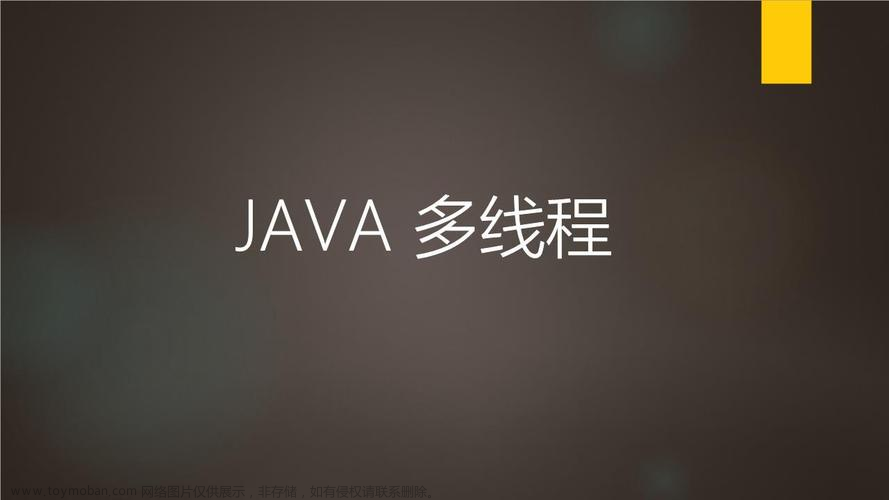1.使用配置文件配置线程的参数
配置文件
thread-pool:
core-size: 100
max-size: 100
keep-alive-seconds: 60
queue-capacity: 1
配置类
@Component
@ConfigurationProperties("thread-pool")
@Data
public class ThreadPoolConfig {
private int coreSize;
private int maxSize;
private int keepAliveSeconds;
private int queueCapacity;
}
2.配置线程池并使用
方式一:线程池结合CompletableFuture来实现
配置线程池类
@Configuration
public class ThreadPoolTask1 {
@Autowired
private ThreadPoolConfig threadPoolConfig;
@Bean("task1")
public ThreadPoolTaskExecutor taskExecutor() {
ThreadPoolTaskExecutor executor = new ThreadPoolTaskExecutor();
executor.setCorePoolSize(threadPoolConfig.getCoreSize()); // 核心线程数
executor.setMaxPoolSize(threadPoolConfig.getMaxSize()); // 最大线程数
executor.setKeepAliveSeconds(threadPoolConfig.getKeepAliveSeconds()); // 非核心线程活跃时间
executor.setQueueCapacity(threadPoolConfig.getQueueCapacity()); // 队列容量
executor.setThreadNamePrefix("test-"); // 设置线程的前缀名
executor.setRejectedExecutionHandler(new ThreadPoolExecutor.CallerRunsPolicy()); // 设置拒绝策略
executor.setWaitForTasksToCompleteOnShutdown(false); // 是否在任务执行完后关闭线程池
executor.initialize();
return executor;
}
}
CompletableFuture使用线程池进行调用
package com.example.demo;
import com.example.demo.config.ThreadPoolTask1;
import com.sun.java.browser.plugin2.DOM;
import org.springframework.beans.factory.annotation.Autowired;
import org.springframework.beans.factory.annotation.Qualifier;
import org.springframework.scheduling.concurrent.ThreadPoolTaskExecutor;
import org.springframework.stereotype.Controller;
import org.springframework.web.bind.annotation.GetMapping;
import org.springframework.web.bind.annotation.RestController;
import java.util.*;
import java.util.concurrent.CompletableFuture;
import java.util.concurrent.ExecutionException;
import java.util.concurrent.Executor;
import java.util.concurrent.Future;
import java.util.stream.Collectors;
@RestController
public class Demo {
@Autowired
private DemoServiceImpl demoService;
@Autowired
@Qualifier("task1")
private ThreadPoolTaskExecutor threadPoolTask1;
@GetMapping("thread1")
public Map<String, String> thread1() {
long start = System.currentTimeMillis();
List<CompletableFuture<String>> futures = new ArrayList<>();
Map<String, String> map = new HashMap<>();
// 使用CompletableFuture的 supplyAsync来处理结果相当于submit, runAsync无返回相当于execute
for (int i = 0; i < 100; i++) {
int b = i;
CompletableFuture<String> future = CompletableFuture.supplyAsync(() ->
demoService.executorTask1(b)
, threadPoolTask1);
futures.add(future);
}
// 获取结果集
CompletableFuture.allOf(futures.toArray(new CompletableFuture[futures.size()]))
.whenComplete((v, th) ->
futures.stream()
.forEach(item -> {
String result = null;
try {
result = item.get();
} catch (InterruptedException e) {
e.printStackTrace();
} catch (ExecutionException e) {
e.printStackTrace();
}
map.put(result.split("-")[1], result.split("-")[0]);
})
).join();
long end = System.currentTimeMillis();
map.put("当前时间",(end- start) + "");
return map;
}
}
任务类
public String executorTask1(int i) {
System.out.println("当前线程-" + Thread.currentThread().getName());
try {
Thread.sleep(2000);
} catch (InterruptedException e) {
e.printStackTrace();
}
if (i == 6) {
throw new RuntimeException("cs");
} else {
return "aaa-" + i;
}
}
方式二:使用@EnableAsync和@Async方式实现
在启动类上加@EnableAsync注解
// 加上@EnableAsync注解,也可以在自己的配置类上加
@EnableAsync // 开启对异步任务的支持
@SpringBootApplication
public class DemoApplication {
public static void main(String[] args) {
SpringApplication.run(DemoApplication.class, args);
}
}
编写线程池配置
// 也可以在此处加上@EnableAsync注解,入口类上不加
@Configuration
public class ThradPoolTask{
@Autowired
private ThreadPoolConfig threadPoolConfig;
@Bean
public Executor taskExecutor() {
ThreadPoolTaskExecutor executor = new ThreadPoolTaskExecutor();
executor.setCorePoolSize(threadPoolConfig.getCoreSize()); // 核心线程数
executor.setMaxPoolSize(threadPoolConfig.getMaxSize()); // 最大线程数
executor.setKeepAliveSeconds(threadPoolConfig.getKeepAliveSeconds()); // 非核心线程活跃时间
executor.setQueueCapacity(threadPoolConfig.getQueueCapacity()); // 队列容量
executor.setThreadNamePrefix("test-"); // 设置线程的前缀名
executor.setRejectedExecutionHandler(new ThreadPoolExecutor.CallerRunsPolicy()); // 设置拒绝策略
executor.setWaitForTasksToCompleteOnShutdown(false); // 是否在任务执行完后关闭线程池
executor.initialize();
return executor;
}
}
使用
@RestController
public class Demo {
@Autowired
private DemoServiceImpl demoService;
@GetMapping("thread")
public Map<String, String> thread() {
long start = System.currentTimeMillis();
Map<String, String> map = new HashMap<>();
List<Future<String>> futures = new ArrayList<>();
for (int i = 0; i < 100; i++) {
Future<String> future = demoService.executorTask(i);
futures.add(future);
}
int b = 1;
futures.forEach(item -> {
try {
String result = item.get();
map.put(result.split("-")[1], result.split("-")[0]);
} catch (InterruptedException e) {
e.printStackTrace();
} catch (ExecutionException e) {
e.printStackTrace();
}
});
long end = System.currentTimeMillis();
map.put("当前时间",(end- start) + "");
return map;
}
}
任务类
// 必须指明使用的是哪个线程池,taskExecutor不带的话用springboot默认注册的线程池
// Future作为返回值,携带返回结果
@Async("taskExecutor")
public Future<String> executorTask(int i) {
System.out.println("当前线程-" + Thread.currentThread().getName());
try {
Thread.sleep(2000);
} catch (InterruptedException e) {
e.printStackTrace();
}
if (i == 6) {
throw new RuntimeException("cs");
} else {
// AsyncResult返回携带的结果
return new AsyncResult<String>("aaa-" + i);
}
}
方式三:重写springboot默认的线程池配置
在启动类上加@EnableAsync注解
// 加上@EnableAsync注解,也可以在自己的配置类上加
@EnableAsync
@SpringBootApplication
public class DemoApplication {
public static void main(String[] args) {
SpringApplication.run(DemoApplication.class, args);
}
}
@Configuration
public class ThreadPoolTask2 implements AsyncConfigurer {
@Autowired
private ThreadPoolConfig threadPoolConfig;
/**
* 修改默认线程池的配置
*
* @return
*/
@Override
public Executor getAsyncExecutor() {
ThreadPoolTaskExecutor executor = new ThreadPoolTaskExecutor();
executor.setCorePoolSize(threadPoolConfig.getCoreSize()); // 核心线程数
executor.setMaxPoolSize(threadPoolConfig.getMaxSize()); // 最大线程数
executor.setKeepAliveSeconds(threadPoolConfig.getKeepAliveSeconds()); // 非核心线程活跃时间
executor.setQueueCapacity(threadPoolConfig.getQueueCapacity()); // 队列容量
executor.setThreadNamePrefix("test2-"); // 设置线程的前缀名
executor.setRejectedExecutionHandler(new ThreadPoolExecutor.CallerRunsPolicy()); // 设置拒绝策略
executor.setWaitForTasksToCompleteOnShutdown(false); // 是否在任务执行完后关闭线程池
executor.initialize();
return executor;
}
/**
* 修改默认的异常处理
* 注意:如果带有返回值Future,异常会被捕获,不会去执行该方法
*
* @return
*/
@Override
public AsyncUncaughtExceptionHandler getAsyncUncaughtExceptionHandler() {
return (ex, method, params) -> {
System.out.println("任务执行的异常" + ex);
System.out.println("执行的任务方法" + method.getName());
for (Object param : params) {
System.out.println("执执行任务的参数" + param);
}
};
}
}
使用
@RestController
public class Demo {
@Autowired
private DemoServiceImpl demoService;
// 不带返回值的任务
@GetMapping("thread2")
public Map<String, String> thread2() {
long start = System.currentTimeMillis();
Map<String, String> map = new HashMap<>();
List<Future<String>> futures = new ArrayList<>();
for (int i = 0; i < 100; i++) {
demoService.executorTask2(i);
}
return null;
}
// 带有返回值的任务
@GetMapping("thread3")
public Map<String, String> thread3() {
long start = System.currentTimeMillis();
Map<String, String> map = new HashMap<>();
List<Future<String>> futures = new ArrayList<>();
for (int i = 0; i < 100; i++) {
Future<String> future = demoService.executorTask3(i);
futures.add(future);
}
int b = 1;
futures.forEach(item -> {
String result = null;
try {
result = item.get();
} catch (InterruptedException e) {
e.printStackTrace();
} catch (ExecutionException e) {
e.printStackTrace();
}
map.put(result.split("-")[1], result.split("-")[0]);
});
long end = System.currentTimeMillis();
map.put("当前时间",(end- start) + "");
return map;
}
}
任务类
// @Async不需要指定,使用默认即可
// 出现异常会走AsyncUncaughtExceptionHandler方法
@Async
public void executorTask2(int i) {
System.out.println("当前线程-" + Thread.currentThread().getName());
try {
Thread.sleep(2000);
} catch (InterruptedException e) {
e.printStackTrace();
}
int a = 1/0;
}
// 即使出现异常也不会走AsyncUncaughtExceptionHandler方法
@Async
public Future<String> executorTask3(int i) {
System.out.println("当前线程-" + Thread.currentThread().getName());
try {
Thread.sleep(2000);
} catch (InterruptedException e) {
e.printStackTrace();
}
if (i == 6) {
throw new RuntimeException("cs");
} else {
return new AsyncResult<String>("aaa-" + i);
}
}
关于三种在执行过程中的异常
方式一:导致请求失败:最好在任务中进行处理
方式二:请求成功了,关于6的那条数据并没有返回给前端 文章来源:https://www.toymoban.com/news/detail-427388.html
文章来源:https://www.toymoban.com/news/detail-427388.html
方式三:请求成功了,关于6的那条数据并没有返回给前端文章来源地址https://www.toymoban.com/news/detail-427388.html
到了这里,关于Springboot结合线程池的使用的文章就介绍完了。如果您还想了解更多内容,请在右上角搜索TOY模板网以前的文章或继续浏览下面的相关文章,希望大家以后多多支持TOY模板网!











